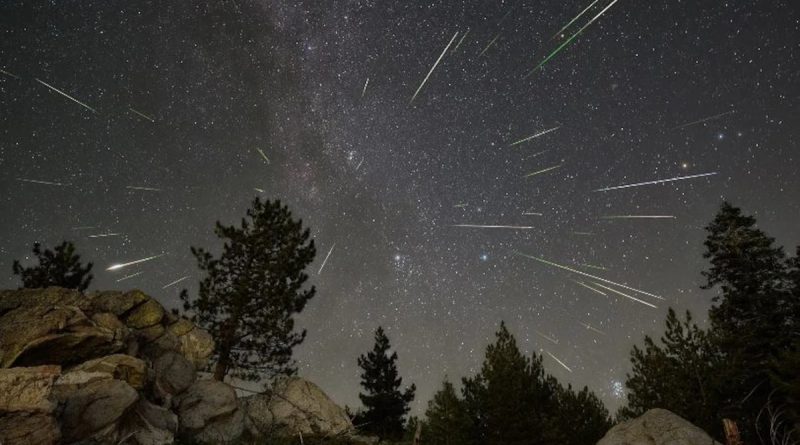Rewrite: Revise and substitute words with alternative synonyms while altering the structure of the sentence to improve clarity.
The prime location for observing is in the Northern Hemisphere, away from urban lights
Prepare for a cosmic display as the Perseid meteor shower, one of the most stunning occurrences in the summer night sky, is nearing its climax. In 2024, the Perseid meteor shower is active between July 17 and August 24 and is projected to reach its peak overnight from Monday, 12 August to Tuesday, 13 August, according to Guardian. NASA considers the Perseids to be the “finest meteor shower” of the year, with around 50 to 100 meteors visible per hour under optimal circumstances.
”With fast and brilliant meteors, Perseids often leave lengthy “trails” of light and color as they race through Earth’s atmosphere. The Perseids are one of the most abundant showers with about 50 to 100 meteors visible per hour. They coincide with balmy summer nighttime conditions that allow skywatchers to easily observe them,” NASA remarked.
When and where to observe Perseid Meteor Shower?
The radiant point of the shower is in the constellation Perseus, and the finest viewing spot is in the Northern Hemisphere, away from urban lights. To enhance your viewing experience, try to watch the meteors with relaxed, peripheral vision – essentially, by looking out of the corner of your eye. The optimal viewing times are between midnight and 5:30 a.m. on August 12-13, when the moon is below the horizon.
Dr Ed Bloomer, a senior astronomer at the Royal Observatory Greenwich, stated, ”Perseus is ascending in the north-east as the sun is setting, so you should look more towards the east.”
To increase your chances of witnessing the Perseid meteor shower, follow these suggestions:
- Head to a dark area with minimal light pollution, allowing your eyes to adapt to the natural darkness.
- If you cannot escape the city, position yourself away from streetlights and other sources of artificial illumination.
- Avoid looking at your phone or any other screens, as the bright display can disturb your night vision and diminish your ability to see faint meteors.
If you are unable to go outside to witness the Perseid meteor shower in person, visit the Virtual Telescope Project’s YouTube channel. Renowned astrophysicist Gianluca Masi will be live-streaming the Perseid meteor shower, delivering the wonder of the night sky directly to your screen.
What triggers the Perseid meteor shower??
The Perseid meteor shower is a cosmic display born from the remnants of Comet Swift-Tuttle, an ancient icy object that has been orbiting the Sun for centuries. Comet Swift-Tuttle makes a close approach to Earth every 133 years, leaving behind a trail of debris. Its most recent visit to the inner Solar System occurred in 1992, and now, every summer, Earth passes through this debris field, creating the breathtaking Perseid meteor shower.
What is a Meteor shower?
A meteor shower is an impressive astronomical event in which numerous small particles from space, typically fragments of comets or asteroids, enter Earth’s atmosphere and burn up, creating a series of bright streaks of light in the night sky. These particles, often no larger than dust or sand, are known as meteors or shooting stars, even though they are not stars at all.
Most meteors burn up completely, leaving no physical evidence behind, but occasionally, larger particles can survive their journey through the atmosphere and land on Earth as meteorites. Two of the top meteor showers of the year are the Perseids, which peak in mid-August, and the Geminids, which peak in mid-December.
Waiting for response to load…

